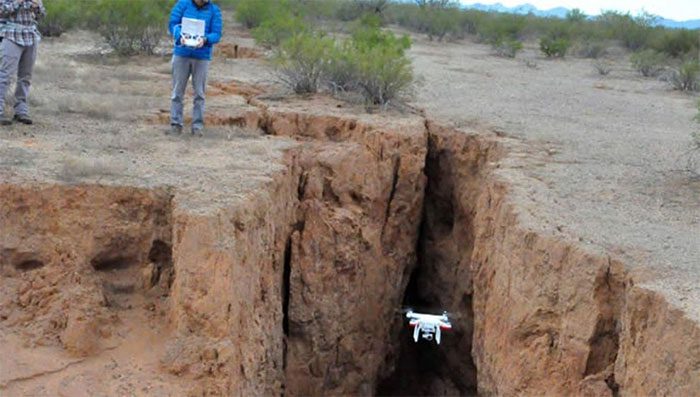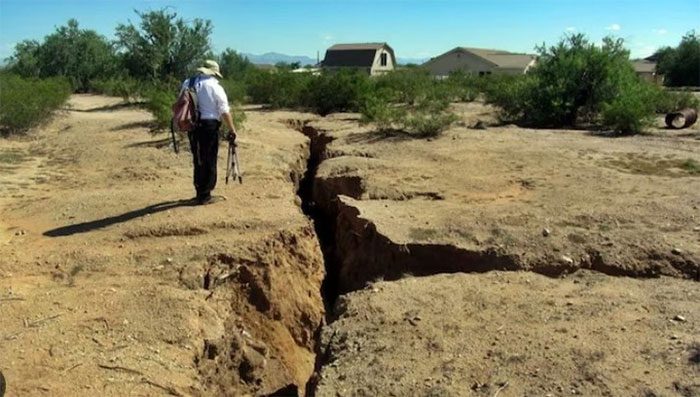Giant Cracks Appear in the Ground Across Multiple Locations Scientists affirm that these are not natural formations but rather caused by human activity.
In the United States, according to the New York Times, large cracks have emerged throughout the Southwestern region. In southern Arizona alone, a map has documented 272 kilometers of cracks.

A crack opened in Arizona in 2017 – (Photo: IFL SCIENCE).
Cracks have also been reported in several states including Utah, California, and Texas.
Joseph Cook of the Arizona Geological Survey stated, “These cracks are not natural formations; they are something we have created.”
“The ground is sinking and shifting due to human efforts to extract groundwater, causing the soil to compact and become unstable,” he explained.
The U.S. Geological Survey elaborates on its website: “More than 80% of land subsidence known in the U.S. is a result of groundwater extraction and human impacts on the environment. Generally, these phenomena are often overlooked in our land and water use activities.”
Cracks occur when softer ground collapses, while nearby areas remain solid.
A recent investigation by the New York Times revealed that groundwater is being depleted faster than it can naturally replenish.

Arth crack in the Chandler Heights residential area, Arizona – (Photo: AGS).
Jason Groth, the Deputy Director of Planning and Growth Management in Charles County, Maryland, told the New York Times, “Most of the water we extract from the ground has been there for thousands of years.”
Groth believes that within a decade, Charles County may run out of water. With rising temperatures and drought, the groundwater we collect may only temporarily compensate for lost rainfall (for example, in agriculture).
“From an objective standpoint, this is a crisis. Many areas in the U.S. will run out of drinking water,” stated Professor Warigia Bowman, a water expert at the University of Tulsa.

A 3.2 km long crack appeared in the southern Arizona desert – (Photo: KTAR NEWS).
Meanwhile, in Mexico, a crack approximately 500 meters long and 3 meters deep has recently appeared in agricultural land in Cocotitlán, State of Mexico, raising concerns among residents.
Additionally, similar cracks in nearby areas such as Chalco and the town of San Martín Cuautlalpan suggest a possible larger phenomenon.
In recent years, many areas of Mexico City, near Edomex, have experienced severe subsidence due to groundwater extraction.
Globally, it is estimated that nearly 20 trillion tons of groundwater have been pumped from the earth since the 1950s.
The Earth’s Axis is Tilting Due to Excessive Groundwater Extraction Recent studies indicate that groundwater extraction could also affect the Earth’s axis. Specifically, the redistribution of groundwater has caused the Earth’s rotation axis to tilt eastward by over 78.7 cm in less than two decades. |


















































